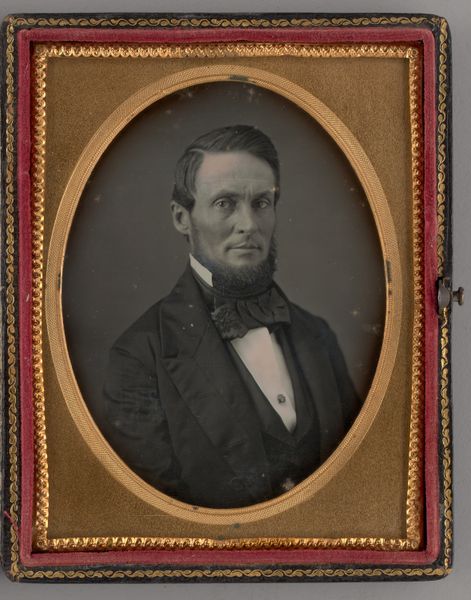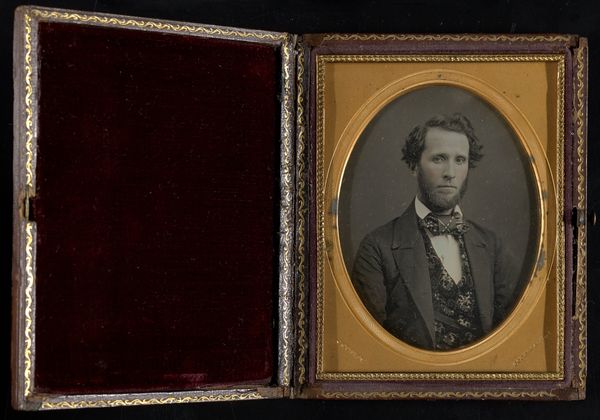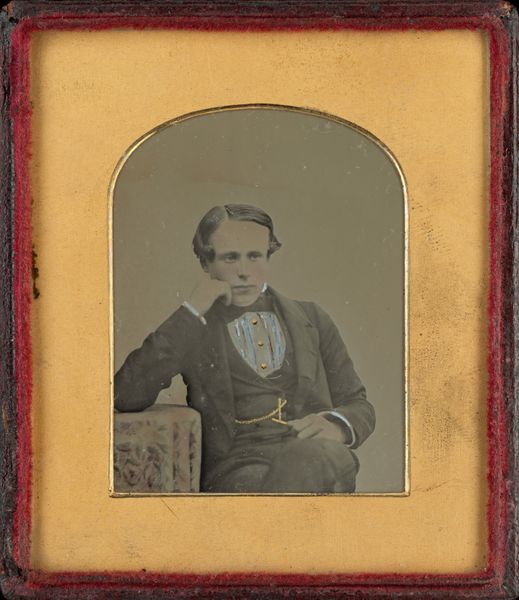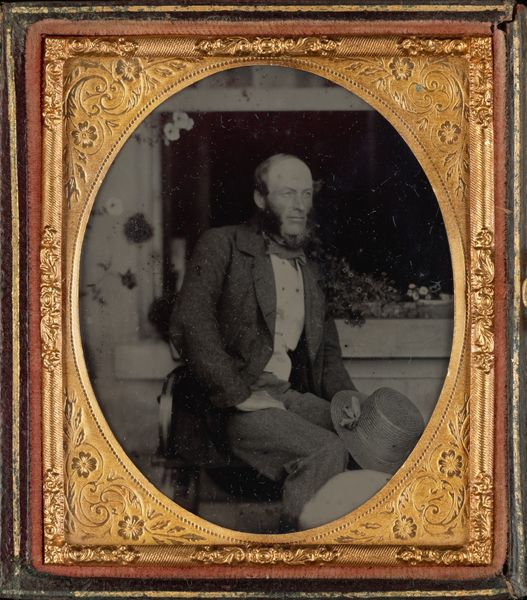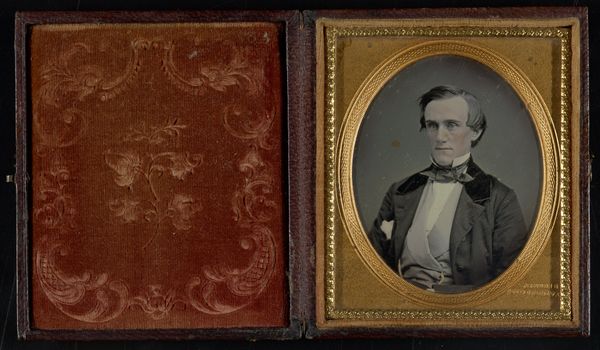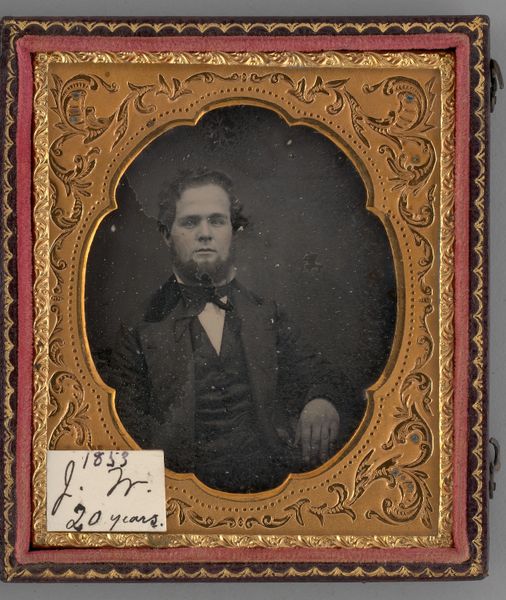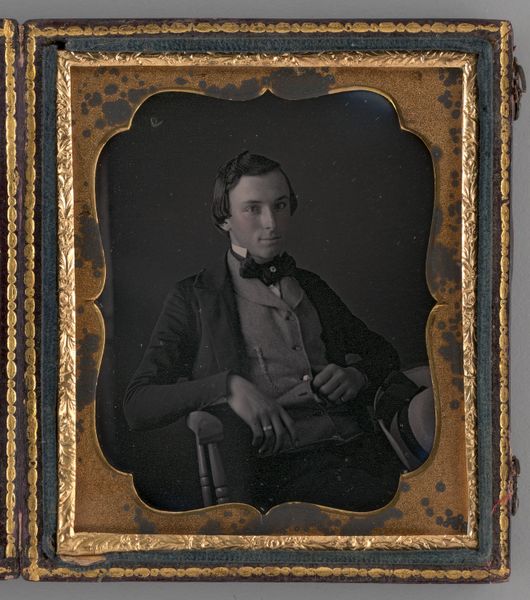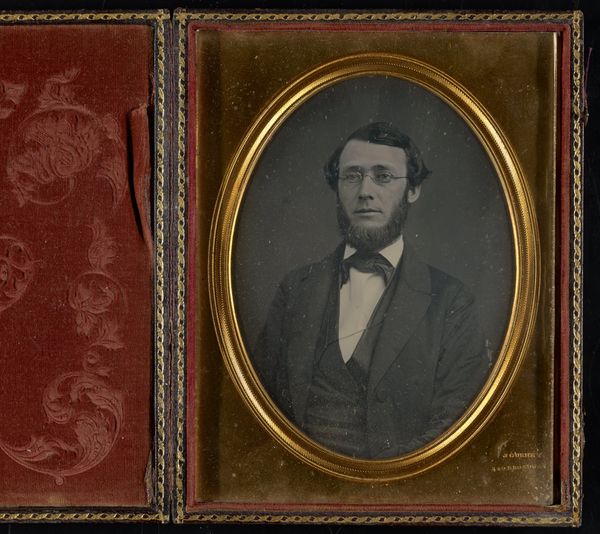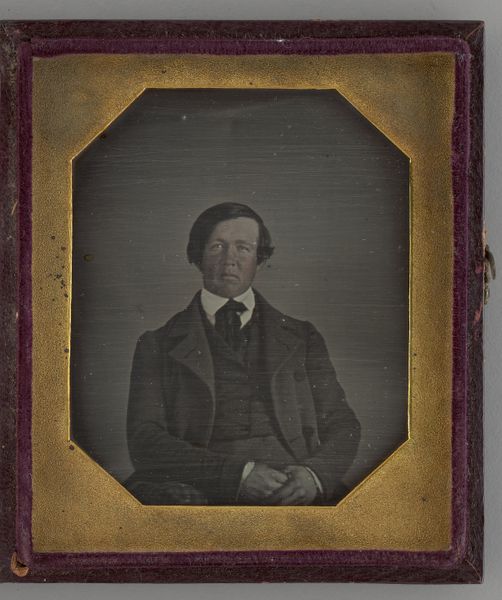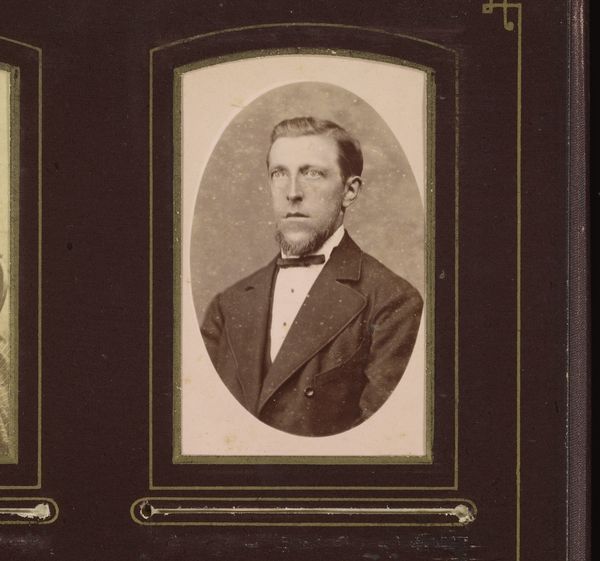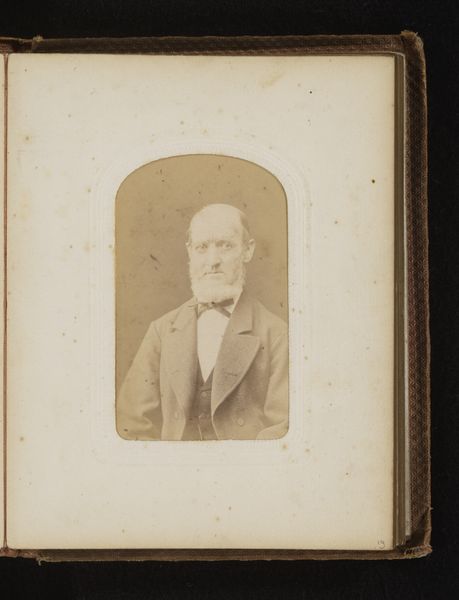![Untitled [half-length portriat of a man] by Jeremiah Gurney](/_next/image?url=https%3A%2F%2Fd2w8kbdekdi1gv.cloudfront.net%2FeyJidWNrZXQiOiAiYXJ0ZXJhLWltYWdlcy1idWNrZXQiLCAia2V5IjogImFydHdvcmtzLzcyNjk0NWRmLWU3M2QtNDYwMy1hNTJjLTcwMzI2Y2ZiOWJiOS83MjY5NDVkZi1lNzNkLTQ2MDMtYTUyYy03MDMyNmNmYjliYjlfZnVsbC5qcGciLCAiZWRpdHMiOiB7InJlc2l6ZSI6IHsid2lkdGgiOiAxOTIwLCAiaGVpZ2h0IjogMTkyMCwgImZpdCI6ICJpbnNpZGUifX19&w=3840&q=75)
Dimensions: 5 1/2 x 4 1/4 in. (13.97 x 10.8 cm) (image)6 x 4 3/4 x 13/16 in. (15.24 x 12.07 x 2.06 cm) (mount)
Copyright: Public Domain
Curator: Here we have an untitled daguerreotype, a half-length portrait of a man by Jeremiah Gurney, dating from around 1852 to 1858. Editor: The intensity of the gaze strikes me first, it’s unyielding and direct, somehow enhanced by the formality and rigid composition of the piece. Curator: Right, daguerreotypes demanded a stillness from their subjects. The process involved coating a copper plate with silver iodide, exposing it in a camera, and then developing it with mercury vapor. This image, being unique and incredibly fragile, gains value when considering the material reality behind it. The meticulous labor involved. Editor: Exactly! And consider the sitter. The fashion – the high collar, dark coat – speaks to a certain social positioning, perhaps even aspiration within a burgeoning middle class, solidifying new identities through accessible portraiture. Whose image could be captured? Who had access to Gurney's studio? Curator: Gurney was quite prominent. His New York studio became renowned for portraiture of politicians and celebrities of the time, not just average citizens. He was also innovative in the means of mass-producing copies of photos in magazines. He became more of an entrepreneur as photography technology advanced, opening the door for easier duplication. Editor: So this portrait speaks to the power dynamics of visibility, of who gets represented and how, in 19th century America. Looking closely, the tonality almost leans towards a monochromatic color scheme, highlighting class structures of power within society. Curator: It shows a moment, doesn't it? Captured meticulously through light and chemistry. The surface almost acts like a mirror for the person viewing. Editor: It is, literally, reflective of both the past and our present interpretations. The rigid gaze, the formality, and material itself provoke conversation about identity and representation even today. Curator: I agree. It underscores that even what seems simple involved complex materials and processes of labor, reflecting technological transformations in society. Editor: Indeed, this seemingly straightforward portrait prompts broader questions around visibility, representation, and the enduring power of a single, intense gaze.
Comments
No comments
Be the first to comment and join the conversation on the ultimate creative platform.
